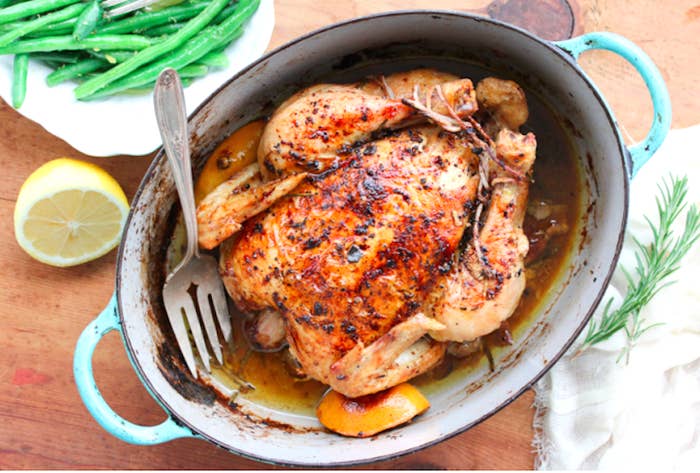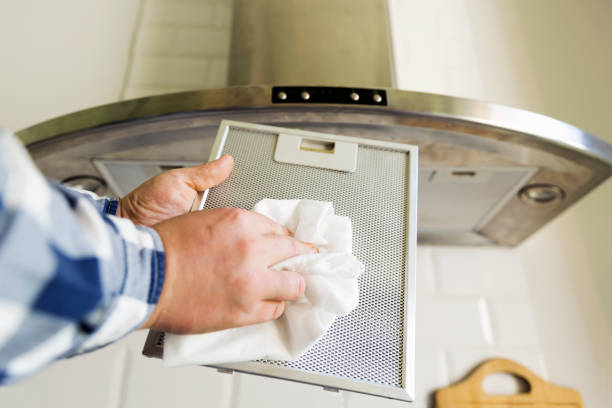When it comes to cooking, kitchen professionals often face the dilemma of not having the right tools at their disposal. Among the most versatile and beloved items in any kitchen arsenal is the dutch oven. However, the question arises: what is a dutch oven substitute? This is not just any question; it's a vital concern for chefs and home cooks alike, especially during busy service hours or when cooking for large gatherings.
If you're in the kitchen and your dutch oven is nowhere to be found, don't panic. This article will explore several remarkable alternatives that can yield the same incredible results as a dutch oven. So whether you're braising, stewing, or baking bread, rest assured that youll have the tools you need right at hand.
:max_bytes(150000):strip_icc()/med102639wkd0_0107_brisedchick_horiz-0124.jpg-00f24780581549f9827c996297ca1b03.jpg)
Understanding the Dutch Oven
Before delving into its substitutes, it's important to understand what makes a dutch oven so special. Typically made of cast iron, these pots are designed to retain heat and moisture, making them ideal for slow cooking and baking. Their adaptability allows them to perform well in the oven, on the stovetop, or even over an open flame.
Moreover, their heavy lid is effective in trapping steam and ensuring that the food cooks uniformly. This unique set of characteristics is what makes finding a suitable replacement essential for any cooking situation.
Remarkable Substitutes for Dutch Ovens
1. Heavy-Weighted Cast Iron Skillet
A heavy cast iron skillet is an excellent alternative to a dutch oven. Its ability to retain heat is comparable, and it can also be used for a variety of cooking methods. Skillets may not have a lid, but covering it with aluminum foil or even a baking sheet can mimic the conditions of a dutch oven.
This option works well when you need more surface area, such as for searing meats before braising, and then you can easily transfer it to the oven. For more tips on how to utilize cast iron cookware, check out how to season cast iron.
2. Slow Cooker
If you're looking for a hands-off approach, a slow cooker is a terrific substitute for a dutch oven. Similar to the dutch oven, its perfect for slow-cooking methods. The major benefit here is that you can set it and forget it, making it an excellent choice for busy kitchen professionals.
Although it lacks the direct heat from a stovetop, most slow cookers distribute heat evenly, which helps in achieving similar results. However, keep in mind that the texture of the final dish might vary slightly.
3. Pressure Cooker
Modern-day pressure cookers, including the popular Instant Pot, offer a tremendous solution when time is of the essence. These devices allow for similar cooking techniques, such as braising or stewing, at a significantly faster rate. The pressure generated within the cooker replicates the humid environment of a dutch oven, allowing food to cook tender and flavorful.
Moreover, using a pressure cooker can be highly efficient in terms of energy consumption. If you're interested in more energy-saving cooking techniques, consider this guidance on cooking tips.
4. Large Stock Pot
Certainly a staple in any commercial kitchen, a large stock pot can serve as a suitable substitute when youre in a pinch. With sufficient depth and a heavy base, it can handle most tasks a dutch oven is meant for. Just ensure to use a tight-fitting lid to help retain moisture effectively.
A stock pot is particularly advantageous for making large batches of soups, stews, and sauces, catering to a crowd's needs. Its also easy to clean and maintain.
5. Baking Dish with Lid
A ceramic or glass baking dish with a lid can also be an extraordinary substitute. These dishes are often designed to withstand high oven temperatures and can replicate the moisture retention of a dutch oven when tightly covered.
They're fantastic for oven-baking casseroles or braised dishes that require longer cooking times. Do remember to check the specifications to ensure they can handle the heat. For further tips, visit this guide on dutch oven cooking.
Why Selecting the Right Substitute Matters
Choosing the right substitute enhances the cooking process and helps achieve the desired texture and flavor. Each alternative comes with its assortment of benefits and slight limitations, something that seasoned chefs understand is crucial to the culinary experience. For instance, while a slow cooker offers convenience, it might not provide the same degree of browning that a dutch oven could offer.
Conclusion
In the culinary world, adaptability is vital. Understanding what is a dutch oven substitute and implementing it correctly can save the day during any cooking crisis. With these substitutes in mind, you can confidently approach your next meal preparation, knowing you're equipped to handle any cooking challenge that comes your way.

FAQs
1. Can I use a non-stick pan as a dutch oven substitute?
While a non-stick pan can work in certain cases, its heat retention and moisture control will be significantly less than that of a dutch oven. If you are braising or slow cooking, look for alternatives with better heat distribution.
2. Are there any oven-safe ceramic dishes that can serve as a substitute?
Yes, oven-safe ceramic dishes that come with lids can serve as effective substitutes, particularly for baking purposes.
3. What cooking methods can I use with these substitutes?
You can use these substitutes for a range of cooking methods, including braising, stewing, slow cooking, and baking. Ensure that whatever substitute you choose can withstand the required temperatures.
For more on the dutch oven's capabilities and uses, check out this article on cooking in a dutch oven.
This article contains affiliate links. We may earn a commission at no extra cost to you.






Leave a comment
This site is protected by hCaptcha and the hCaptcha Privacy Policy and Terms of Service apply.